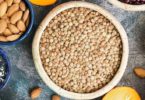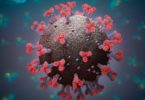Which of the following is not the property of benzene:
(a) Characteristic smell
(b) Inflammable
(c) Unsaturation
(d) Colorless
Related: Chemical bonding test bank
The number of benzylic hydrogen atoms in ethylbenzene is:
(a) 3
(b) 5
(c) 2
(d) 7
In the reaction of p‑chlorotoluene with KNH2 in liquid NH3, the major product is:
(a) o‑Toluidine
(b) m‑Toluidine
(c) p‑Toluidine
(d) p‑Chloroaniline
Aniline under acidic medium, when chlorinated, produces:
(a) o‑chloro aniline
(b) m‑chloro aniline
(c) p‑chloro aniline
(d) Mixture of ortho and para‑chloro aniline
Which of the following is most reactive towards sulphonation?
(a) m‑Xylene
(b) o‑Xylene
(c) Toluene
(d) p‑Xylene
Related: practice questions on Amines
Which of the following is produced when a mixture of benzene vapor and oxygen is passed over V2O5 catalyst at 775 K?
(a) Oxalic acid
(b) Glyoxal
(c) Fumeric acid
(d) Maleic anhydride
Etard reaction in the following is:
(a) Oxidation of toluene to benzaldehyde by chromylchloride
(b) Oxidation of toluene to benzaldehyde by alkaline KMnO4
(c) Dry distillation of calcium benzoate
(d) Reaction of benzene with Cl2 in the presence of UV light
For preparing monoalkyl benzene, the acylation process is preferred than direct alkylation because
(a) In alkylation, a poisonous gas is evolved
(b) In alkylation, a large amount of heat is evolved
(c) In alkylation, a polyalkylated product is formed
(d) Alkylation is very costly
Benzene reacts with n‑propyl chloride in the presence of anhydrous AlCl3 to give predominantly:
(a) n‑Propylbenzene
(b) Isopropylbenzene
(c) 3‑Propyl‑1‑chlorobenzene
(d) Cumene
Related: p block elements questions and answers
The chlorination of toluene in the presence of ferric chloride gives predominantly:
(a) Benzyl chloride
(b) m‑chlorotoluene
(c) Benzal chloride
(d) o‑and p‑chlorotoluene
Related: multiple choice questions on Straight lines
Chlorination of toluene in the presence of light and heat followed by treatment with aqueous NaOH gives:
(a) o‑cresol
(b) p‑cresol
(c) 2,4‑dihydroxytoluene
(d) Benzoic acid
Among the following statements on the nitration of aromatic compounds, the false one is:
(a) The rate of benzene is almost the same as that of hexadeuterobenzene
(b) The rate of nitration of toluene is greater than that of benzene.
(c) The rate of nitration of benzene is greater than that of hexadeuterobenzene
(d) Nitration is an electrophilic substitution reaction
Nitrobenzene can be prepared from benzene by using a mixture of conc. HNO3 and conc. H2SO4. In the nitrating mixture HNO3 acts as a:
(a) Base
(b) Acid
(c) Reducing agent
(d) Catalyst
Benzenediazonium chloride on reaction with phenol in in a weakly basic medium gives:
(a) Diphenyl ether
(b) p‑hydrooxyazobenzene
(c) Chlorobenzene
(d) Benzene
Related: Laws of Motion (Physics) MCQ
Benzene is a resonance hybrid mainly of two Kekule structures. Hence:
(a) Half of the molecules correspond to one structure, and half of the second structure
(b) At low temperatures, benzene can be separated into two structures.
(c) Two structures make an equal contribution to the resonance hybrid
(d) An individual benzene molecule changes back and forth between two structures
Which of the following group is divalent:
(a) Benzoyl
(b) Benzyl
(c) Benzal
(d) p‑Tolyl
Reaction of SO3 is easier in:
(a) Benzene
(b) Toluene
(c) Nitrobenzene
(d) chlorobenzene
Related: Ecosystem trivia questions and answers
Which order is correct for the decreasing reactivity to ring monobromination of the following compounds:
(I) C6H5CH3
(II) C6H5COOH
(III) C6H6
(IV) C6H5NO2
(a) I > II > III > IV
(b) I > III > II > IV
(c) II > III > IV > I
(d) III > I > II > IV
Benzene cannot undergo
(a) Substitution
(b) Addition
(c) Elimination
(d) Oxidation
When sulphonilic acid (p‑H2NC6H4SO3H) is treated with excess of bromine, the product is:
(a) tribromo product
(b) dibromo product
(c) monobromo product
(d) tetrebromo product
An aromatic compound of molecular formula C6H4Br2 was nitrated, then three isomers of formula C6H3Br2NO2 were obtained. The original compound is:
(a) o‑dibromobenzene
(b) m‑dibromobenzene
(c) p‑dibromobenzene
(d) Both A & C
Related: Coordination compounds questions
m‑Bromotoluene is prepared by:
(a) Bromination of toluene
(b) Friedel Craft’s reaction of bromobenzene with CH3Cl
(c) Bromination of nitrobenzene and subsequent replacement of –NO2 group with methyl group
(d) Bromination of aceto‑p‑toluidine followed by hydrolysis and deamination
Benzene was discovered by
(a) Ramsay
(b) Dalton
(c) Faraday
(d) Priestley
Which one of the following will undergo meta substitution on monochlorination?
(a) Ethoxy ethane
(b) Chlorobenzene
(c) Ethyl benzoate
(d) Phenol
Benzene can be obtained by heating either benzoic acid with X or phenol with Y. X and Y are respectively
(a) Zinc dust and soda lime
(b) Soda lime and zinc dust
(c) Zinc dust and sodium hydroxide
(d) Soda lime and copper
Related: Enzyme questions and answers
Pyridine is less basic than triethylamine because
(a) Pyridine has an aromatic character
(b) Nitrogen in pyridine is sp2 hybridized
(c) Pyridine is a cyclic system
(d) In pyridine, lone pair of nitrogen is delocalized






